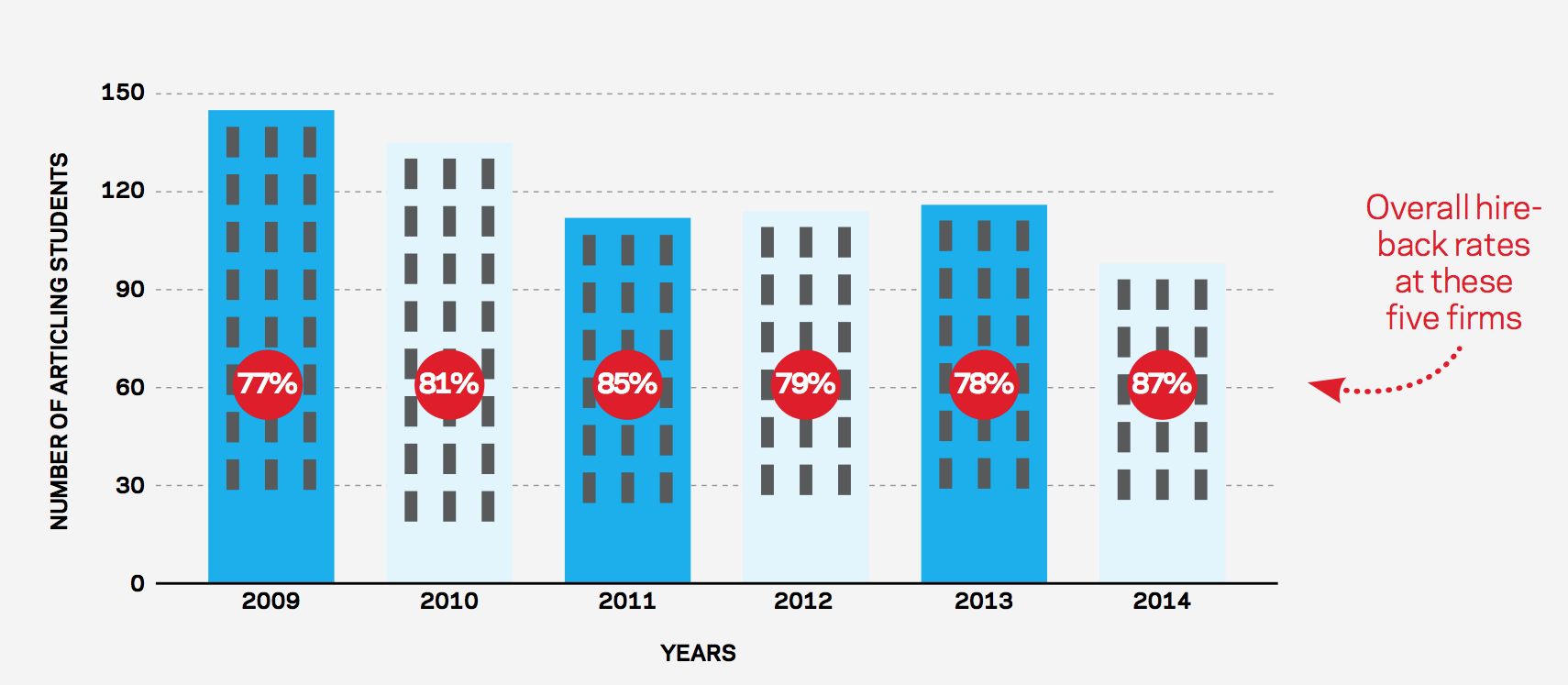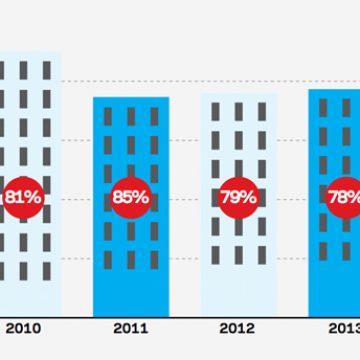For students, the hireback stats look pretty scary. Back in 2009, Precedent surveyed the Toronto law offices that hired the most articling students to find out how many they hired back as first-year associates. Each year, we ask again and report those numbers online in our Hireback Watch. Over the last year, the number of articling jobs at the 16 offices that traditionally hire the most students fell from 297 to 282. Worse still, those numbers don’t include students from Heenan Blaikie LLP, which collapsed in February and, of course, won’t be hiring students in the future.
“If I were a law student looking for work on Bay Street, I would not find any of this encouraging,” says Jordan Furlong, legal consultant at Edge International. For the past 40 years, he explains, clients have blindly paid big legal fees for the work of students, at least in part. Now, that era is over: clients want lower costs, and they don’t think students, who spend most of their time completing routine legal tasks, are worth the money. For that reason, Furlong predicts that the number of articling gigs on Bay Street will continue to decline. “Firms everywhere are coming to the belated realization that they, not their clients, have to pay for student training.”
But the shrinking articling pool is only half the story: the proportion of articling students hired back is on the rise. This year, those 16 offices hired back 78 percent of students, up from 73 percent a year ago. In fact, the total number of students hired back remains steady, with 200 making the cut this year, compared to 204 in 2013.
A consistent influx of junior associates “means that firms are still looking to identify and invest in young talent,” says Adam Lepofsky, president and founder of the legal recruiting firm RainMaker Group. Despite the fall of Heenan Blaikie, stable hireback numbers indicate that firms “are optimistic about the next few years.”
Beyond hireback numbers, Lepofsky hopes recent growth in the American legal market — New York and California, in particular — will spill over into Canada within a year. “I’m getting demands from clients in the States that I haven’t gotten in a long time,” he says. “And generally our economy will follow the U.S. economy, especially in the business of law.”
The demand for legal work is hardly drying up, says Furlong. But that demand is not for junior lawyers — it’s for seasoned partners. As firms cut articling jobs, he says they’ll hire fewer first-years. The hireback rate could stay high, but Furlong expects the number of new lawyers on Bay Street to decline. “Firms are still overlawyered.”
Bay Street looks bearish
In 2009, Blakes, Davies, McCarthys, Osler and Stikemans took on the most articling students at their Toronto offices. Since then, they’ve shed a combined 47 jobs, but the hireback rate at those firms has jumped up by 10 percent.

The biggest players, then and now
Toronto offices with the most students in 2009
Osler — 33
Stikemans — 33
Blakes — 29
McCarthys — 28
Davies — 22
Toronto offices with the most students in 2014
Blakes — 29
Torys — 25
Stikemans, Norton Rose — 20
BLG, McCarthys, Cassels — 19
For a detailed rundown of all the numbers, check out our Hireback Watch 2014 chart.


